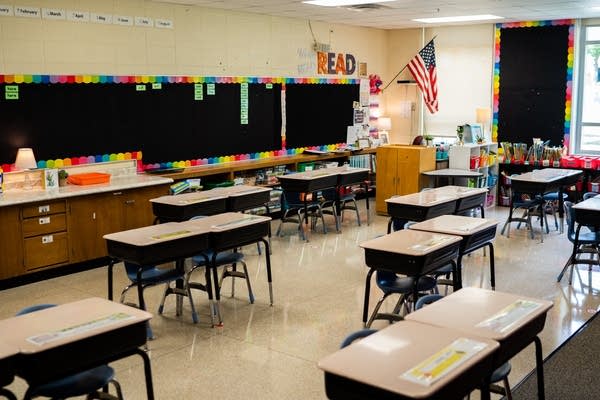More Minnesota schools halt in-person classes as COVID-19 cases rise

Go Deeper.
Create an account or log in to save stories.
Like this?
Thanks for liking this story! We have added it to a list of your favorite stories.
Updated: Nov. 12, 7:27 a.m. | Posted: Nov. 11, 11:07 a.m.
Duluth, Bloomington and Hopkins public schools have announced plans to transition their students to distance learning as COVID-19 case rates rise across Minnesota.
And the Anoka-Hennepin district, Minnesota's largest school district, will soon transition elementary students to distance learning, as a growing number of coronavirus cases has left it short on staff and bus drivers. Elementary students have been attending in-person classes two days a week since Sept. 15.
Anoka-Hennepin’s middle and high schools switched from a hybrid schedule to distance learning Nov. 4, the St. Paul Pioneer Press reported.
According to Kirk Shneidawind, executive director of the Minnesota School Boards Association, those districts will likely be joined by many others in coming days and weeks.
Turn Up Your Support
MPR News helps you turn down the noise and build shared understanding. Turn up your support for this public resource and keep trusted journalism accessible to all.
“Our superintendents are watching their numbers and their county numbers are going off the chart,” Shneidawind said. “And with the holidays coming up, with the risk of numbers going up even more this time and with the flu season, our administrators are preparing in the event that they would have to move everybody to distance learning.”
In July, Gov. Tim Walz announced a plan that would allow local school and health officials to decide whether or not to transition their students to remote learning when COVID-19 case numbers get too high in their county and school buildings.
As of now, the governor has no intention to deviate from those plans, according to Walz spokesperson Teddy Tschann.
School administrators have said the governor’s plan allows them to make the best decisions for their communities based on local conditions.
But North St. Paul Superintendent Christine Tucci-Osorio said making those decisions on a local level also puts a lot of pressure on school administrators.
“It’s very difficult to have to rely on multiple different data points and make a decision that’s often unpopular in both directions — whether you’re in person too much or not enough and there’s a lot of other opinions out there,” she said. “There’s a lot of pressure on school boards and superintendents out there trying to make those decisions.”
Some districts such as North St. Paul and Hopkins put together COVID-19 dashboards to try to better communicate data on new cases in schools to families in their districts. Tucci-Osorio said she hopes the dashboards will offer more transparency and help families understand how decisions are being made about in-person vs. distance learning.
“One thing that is really impacting schools is not necessarily even COVID per se in the schools, but the number of people that have to be quarantined because they are close contacts. And I’m speaking about staff when I say that,” Tucci-Osorio said. “We end up with a real staffing shortage. Not because there’s a lot of COVID transmission happening in the school, but because there’s a lot of COVID [cases] in the community.”
For many school administrators, students and families, halting in-person learning due to rising COVID-19 case counts, means yet another about-face in a year full of canceled, reworked and undermined plans.
“We’re 10 weeks into this [school year] and I think many of our districts were just starting to feel like they were kind of getting ... stuff figured out,” Shneidawind said. “Many of our administrators feel like they’re on a bed of sand, that we’re constantly moving and trying to adapt.”
The Associated Press contributed to this report.


